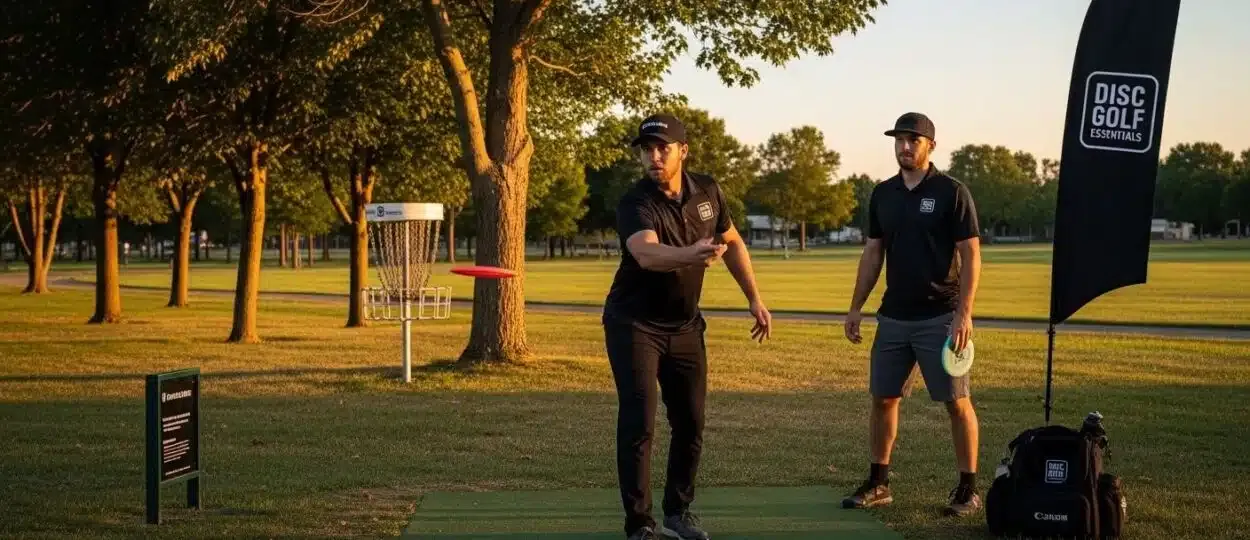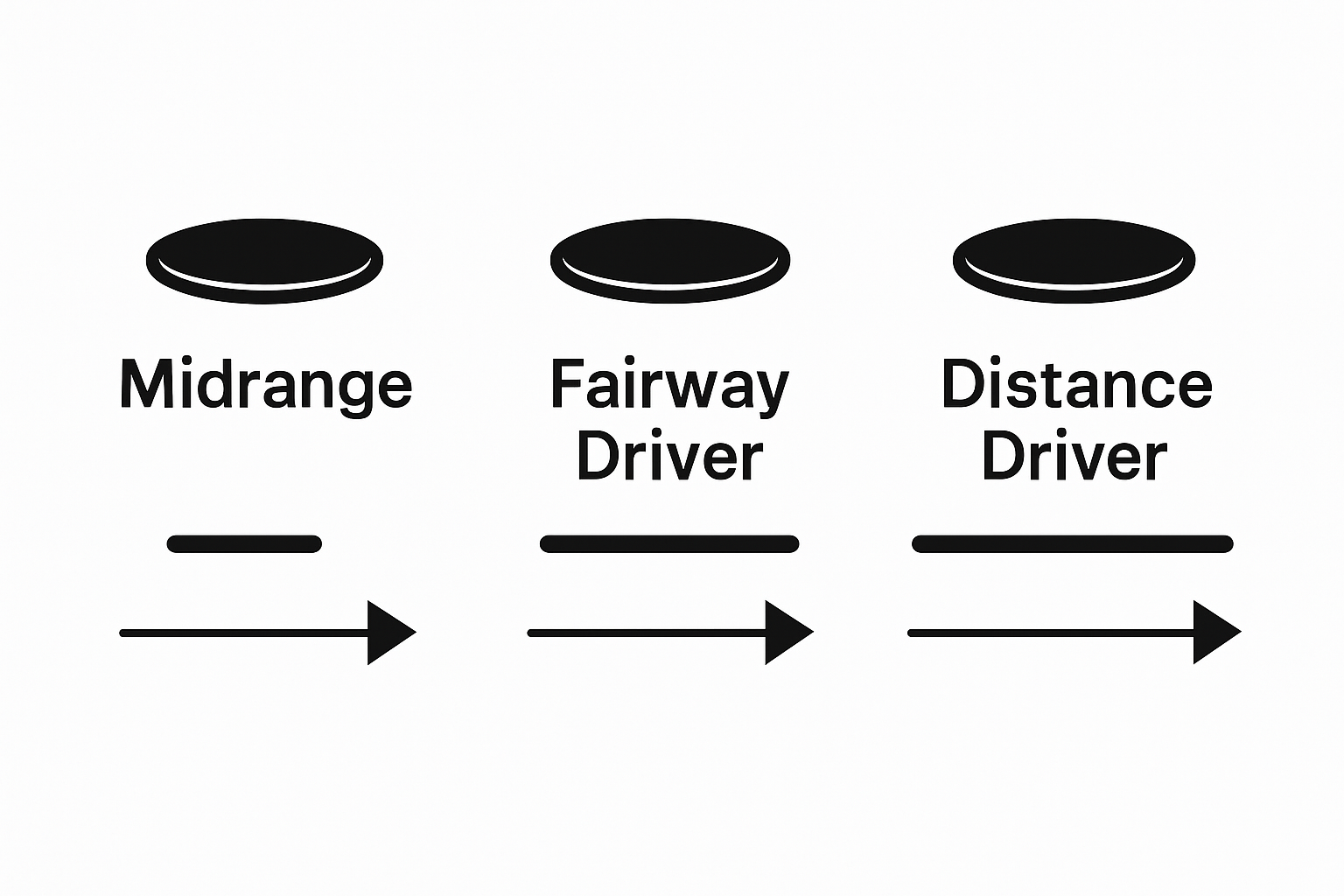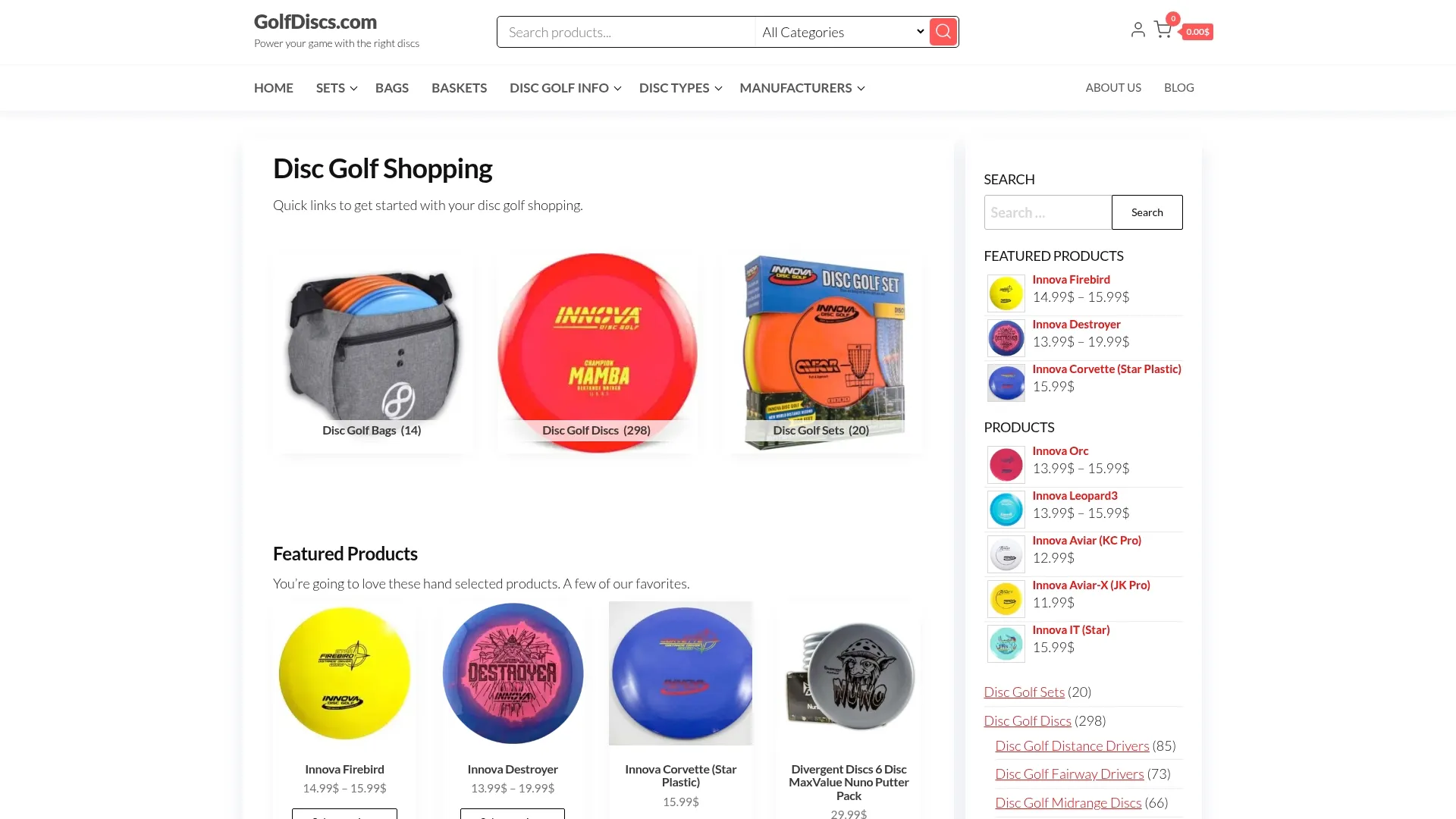
What is a Fairway Driver? Understanding Disc Golf Essentials
Disc golf players often obsess over throwing farther, yet the real game-changer sits right in the middle of your bag. Fairway drivers hold a unique spot because they balance both distance and accuracy, and their speed ratings usually fall between 6 and 8. That surprises a lot of people who assume you need ultra-fast discs for tough courses. In reality, fairway drivers give you the edge with control and consistency, which can drop your score faster than any high-speed throw ever will.
Table of Contents
- Defining Fairway Drivers In Disc Golf
- The Importance Of Fairway Drivers In Gameplay
- Understanding Flight Characteristics And Performance
- Choosing The Right Fairway Driver For Your Style
- The Role Of Fairway Drivers In Competitive Disc Golf
Quick Summary
| Takeaway | Explanation |
|---|---|
| Fairway drivers offer a balance of distance and control | With speed ratings of 6 to 8, fairway drivers provide moderate velocity while maintaining precision for effective gameplay. |
| Ideal for technical shots in tight spaces | Fairway drivers excel at maneuvering through obstacles and achieving accuracy for placement shots on challenging courses. |
| Select discs based on personal throwing style | Understanding your arm speed, release angle, and preferred shot shapes helps in choosing the right fairway driver for optimal performance. |
| They enhance strategic shot selection and course navigation | Fairway drivers allow players to shape shots effectively, leading to better control and reduced risk of errors on various terrains. |
| Performance improves with consistent practice and experimentation | Familiarizing yourself with different discs and conditions can significantly enhance your shot-making abilities and overall gameplay. |
Defining Fairway Drivers in Disc Golf
In the world of disc golf, fairway drivers represent a critical piece of equipment that bridges the gap between distance and control. Understanding what makes these discs unique can dramatically improve a player’s performance and strategy on the course.
Characteristics of Fairway Drivers
Fairway drivers are specialized discs designed to provide a balanced combination of distance and accuracy. According to the Professional Disc Golf Association, these discs typically have speed ratings between 6 and 8, which means they offer moderate velocity without sacrificing control. Their key characteristics include:

- Narrower rim width compared to distance drivers
- More predictable flight paths
- Enhanced maneuverability in tight course sections
- Ideal for shots requiring precise placement
Flight Dynamics and Performance
The unique design of fairway drivers allows players to execute more technical shots with greater consistency. These discs are engineered to maintain a straighter trajectory while still providing significant distance potential. Players can expect fairway drivers to perform exceptionally well in scenarios that demand both power and precision, such as navigating wooded courses or executing controlled approach shots.
For players looking to expand their disc selection, understanding disc performance characteristics becomes crucial in selecting the right fairway driver. Factors like wind conditions, player skill level, and specific course layouts all influence how effectively a fairway driver will perform.
Strategic Importance in Disc Golf
Fairway drivers occupy a critical middle ground in a disc golfer’s arsenal. They offer more distance than midrange discs while providing significantly better control compared to high-speed distance drivers.
This makes them an essential tool for players at all skill levels, from beginners learning course management to advanced players executing complex shot strategies.
Whether you are threading a shot through dense tree lines or seeking a reliable disc for consistent fairway performance, fairway drivers represent a versatile and indispensable component of disc golf equipment.
To help you better understand the differences between disc types, here is a comparison table outlining the key features and purposes of fairway drivers, midrange discs, and distance drivers in disc golf.
| Disc Type | Speed Rating | Rim Width | Primary Use | Key Strengths |
|---|---|---|---|---|
| Fairway Driver | 6-8 | Narrower than distance drivers | Controlled distance shots and technical placement | Balance of control & distance |
| Midrange Disc | 4-6 | Medium | Approach shots, accuracy, and short drives | High accuracy, easy control |
| Distance Driver | 9+ | Widest | Maximum distance throws | Longest flight potential |
The Importance of Fairway Drivers in Gameplay
Fairway drivers are more than just another disc in a player’s bag they are strategic weapons that can transform a disc golfer’s performance and approach to the game. Understanding their critical role helps players make smarter decisions and improve their overall gameplay.
Precision and Control Dynamics
In disc golf, precision often matters more than raw power. Fairway drivers excel at delivering controlled shots with remarkable accuracy. According to the Professional Disc Golf Association, these discs enable players to navigate complex course layouts by providing predictable flight paths and consistent performance. Their design allows for nuanced shot-making that can make the difference between a good and exceptional round.
Key advantages of fairway drivers include:
- Ability to shape shots around obstacles
- Consistent trajectory with minimal deviation
- Enhanced accuracy in challenging wind conditions
- Versatility across different course terrains
Strategic Shot Selection
Mastering fairway drivers requires understanding their unique flight characteristics. These discs shine in scenarios demanding technical precision like threading through narrow fairways, executing controlled approaches, or making strategic shots that require minimal fade. Exploring advanced disc selection techniques can help players maximize their fairway driver potential and develop a more sophisticated gameplay strategy.
Performance Across Skill Levels
Whether you are a beginner learning course management or an advanced player executing complex strategies, fairway drivers provide a critical tool for improvement. They bridge the gap between midrange discs and high-speed distance drivers, offering players a versatile option that adapts to various playing conditions. By developing proficiency with fairway drivers, disc golfers can significantly enhance their shot-making capabilities and overall game performance.
Ultimately, fairway drivers represent more than equipment they are a gateway to more intelligent, strategic disc golf play.
Understanding Flight Characteristics and Performance
Fairway drivers represent a sophisticated blend of aerodynamic engineering and athletic precision, with their flight characteristics determining the effectiveness of each throw. Understanding these nuanced performance dynamics can dramatically improve a disc golfer’s game strategy and overall skill development.
Aerodynamic Design Fundamentals
The flight of a fairway driver is governed by complex aerodynamic principles that influence its trajectory, speed, and stability. According to the U.S. Anti-Doping Agency, these discs are engineered to provide consistent and predictable flight paths that allow players to execute precise shots across various course conditions.
Key flight characteristics include:
- Initial velocity and release speed
- Angle of release
- Rotational spin
- Wind resistance and environmental factors
- Disc material and weight distribution
Stability and Trajectory Mechanics
Stability determines how a fairway driver behaves during its flight. Discs can be overstable, understable, or neutral, each offering unique performance attributes. Players must understand how disc stability interacts with throwing technique to achieve desired shot shapes. Learn more about advanced disc stability techniques to enhance your understanding of these critical performance dynamics.
Performance Optimization Strategies
Optimizing fairway driver performance requires a holistic approach that considers multiple factors. Players must develop an intimate understanding of how disc design, throwing technique, and environmental conditions intersect to create ideal flight paths. This involves experimenting with different release angles, understanding personal throwing mechanics, and selecting discs that complement individual playing styles.
Mastering fairway driver performance is not just about technical knowledge it is about developing an intuitive connection between the player, the disc, and the course landscape.

Choosing the Right Fairway Driver for Your Style
Selecting the perfect fairway driver is a nuanced process that requires understanding personal throwing mechanics, skill level, and playing environment. The right disc can transform your gameplay, offering improved accuracy, distance, and confidence on the course.
Assessing Personal Throwing Style
Every disc golfer has a unique throwing technique that influences disc selection. According to the Professional Disc Golf Association, different fairway drivers are designed to accommodate various throwing styles and skill levels. Players must evaluate key personal characteristics such as:
- Arm speed and power
- Typical release angle
- Preferred shot shapes
- Comfort level with different disc behaviors
- Physical throwing mechanics
Stability and Performance Matching
Matching a fairway driver’s stability to your throwing style is crucial for optimal performance. Discs range from overstable to understable, each providing distinct flight characteristics. Overstable discs tend to fade harder for powerful throwers, while understable discs offer more turn and potential for creative shot-making. Explore advanced disc selection techniques to fine-tune your understanding of disc dynamics.
Skill Level and Progression Considerations
Your skill level plays a significant role in fairway driver selection. Beginners might benefit from more understable discs that provide easier control and more forgiving flight paths. Advanced players can leverage more complex disc characteristics to execute sophisticated shots. Progression involves gradually transitioning to discs with more advanced flight characteristics as your technique improves.
Ultimately, choosing the right fairway driver is a personal journey of experimentation, self-discovery, and continuous skill development.
The Role of Fairway Drivers in Competitive Disc Golf
Competitive disc golf demands precision, strategic equipment selection, and an intimate understanding of how different discs perform under tournament conditions. Fairway drivers emerge as critical tools that can significantly influence a player’s performance and competitive edge.
Strategic Course Navigation
According to Penn State University’s Disc Golf Research, fairway drivers are uniquely positioned with speed ratings between 7 and 9, making them ideal for navigating complex course layouts. These discs excel in scenarios requiring controlled distance and accuracy, particularly on courses with technical challenges like tight fairways, wooded sections, and strategic out-of-bounds areas.
Key competitive advantages include:
- Precision shots through narrow passages
- Consistent trajectory control
- Reduced risk of overshooting baskets
- Adaptability to various course geometries
- Minimal wind interference
Tournament Performance Dynamics
In competitive settings, fairway drivers provide players with a strategic advantage by offering superior control and predictable flight paths. Tournament-level performance relies on a player’s ability to execute precise shots consistently. Explore essential disc golf competition strategies to understand how equipment selection impacts competitive success.
Advanced Player Techniques
Advanced disc golfers leverage fairway drivers to execute complex shot shapes and manage challenging course conditions. These discs allow players to shape shots with greater intention, whether navigating around obstacles or maintaining a specific line under varying wind conditions. The ability to control disc flight becomes paramount in tournament play, where marginal advantages can determine rankings and competitive outcomes.
Here is a concise table summarizing the stability categories of fairway drivers and how they impact flight characteristics and throwing techniques. This can assist players in matching disc stability to their individual gameplay needs.
| Stability Type | Description | Flight Behavior | Best For |
|---|---|---|---|
| Overstable | Tends to resist turning and fades left (for right-hand backhand) | Predictable strong fade | Power throwers, windy conditions |
| Neutral | Stable and flies straight with minimal turn or fade | Straight flight path | All-around use |
| Understable | Turns right (for right-hand backhand) before fading left | More turn, less fade | Beginners, creative shot shapes |
Ultimately, fairway drivers represent more than equipment they are precision instruments that transform strategic disc golf performance.
Take Your Fairway Driver Game to the Next Level
Struggling to find the perfect fairway driver that matches your throwing style and gives you the control you read about in “What is a Fairway Driver? Understanding Disc Golf Essentials”? Many players want more accuracy and distance but feel overwhelmed by technical disc differences and choosing the right gear. You deserve discs that fit your skills, help you execute precise shots, and boost your confidence on every hole.

Discover discs that truly suit your game at golfdiscs.com. Check out our guide on how to choose disc golf discs to match your style and needs. Whether you want to master advanced disc stability techniques or just get an upgrade that delivers results, now is the time. Visit golfdiscs.com and choose the fairway driver that will help you play smarter and perform better today.
Frequently Asked Questions
What is a fairway driver in disc golf?
Fairway drivers are specialized discs designed to provide a balance of distance and accuracy, typically featuring speed ratings between 6 and 8, making them ideal for strategic shots on the course.
How do fairway drivers differ from distance drivers?
Fairway drivers have a narrower rim and lower speed ratings compared to distance drivers, which allows for more control and precision while still providing substantial distance appropriate for technical shots.
When should I use a fairway driver during a game?
You should use a fairway driver when you need to execute controlled shots that require precise placement, such as navigating through tight fairways or approaching the basket in a wooded area.
What factors should I consider when choosing a fairway driver?
When selecting a fairway driver, consider your throwing style, skill level, stability preferences (overstable vs. understable), and the type of course you’ll be playing, as these aspects can greatly affect your performance.
